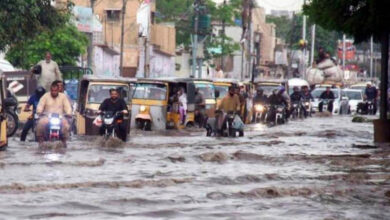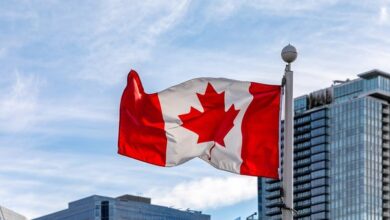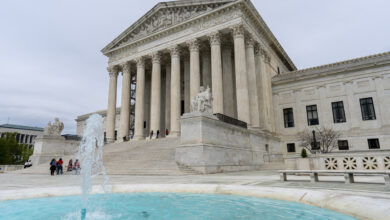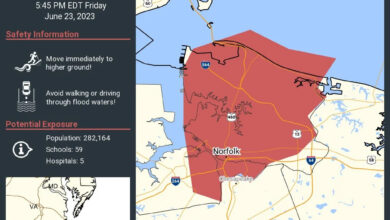Queen’s coronation recalled as UK prepares to crown her son
With Elizabeth’s son King Charles IIIwho will be crowned on May 6, people remember his mother’s coronation 70 years ago, which was the last time the British public witnessed the rite.
“The whole of London was kind of a cauldron of people running into the area to see what was happening,” said James Wilkinson, then an 11-year-old member of the westminster abbey choir, who sang during the ceremony.
Wilkinson’s memories of those events begin more than a year before the coronation.
The choristers, all of whom attended a special boarding school for choir members, were at a Latin lesson when the abbey’s great tenor bell began tolling every minute and the Union flag was lowered to half-mast. “The director came in and told us that the king was dead,” Wilkinson said. “And of course what we were excited about then was the fact that there would be new coins and stamps with the queen’s head on, because we all collect stamps.”
The initial rumor was followed by the realization that there would be a coronation.
The choristers spent months preparing for the service, learning the music and words of the hymns they would sing during the three-hour ceremony. The abbey was closed to prepare.
Temporary seating tiers were installed to quadruple the abbey’s capacity to accommodate 8,251 guests, a temporary annex was built outside to provide space for participants to don their robes and prepare for the procession, and preparations were made for broadcast the event on the fixed screen. emerging medium of television. Wilkinson, now 81, remembers being stunned when choir members entered the church for their first rehearsal at the venue a few weeks before the coronation. “We hadn’t been to the abbey in a long time, and I was absolutely amazed to see it because it was… transformed inside with wonderful new carpeting and balconies,” he said. “There (were) the TV lights for the filming, which made everything glow.”
More than 4,000 miles away, on the Caribbean island of Dominica, in what was still a corner of the British Empire, children were also preparing for the coronation of the glamorous young woman who was also their queen.
Sylius Toussaint, now 83, still remembers the coronation song he learned seven decades ago, laughing as he softly sings the blessing for “our queen who is crowned today,” occasionally stumbling over a phrase lost to time.
“When in the dust of the brown abbey, and the bells ring in the city of London, the queen who is crowned with a crown of gold, may be crowned, may she be crowned, be crowned with the love of your children,” he concludes. . “Hehehehe. Yes, I remember!”
There were no televisions in the town of St. Joseph, about 10 miles from the capital Roseau, so the adults huddled around two radios to follow events in London.
For Toussaint and his friends, it was a day of patriotic food, games and songs, much like Empire Day, the annual holiday created at the turn of the last century to remind children in the far reaches of the United Kingdom that they were British. .
They played cricket and rounders, drank ginger beer and ate sweet cake with margarine and coconut, Toussaint said. The Boy Scouts marched and there were three-legged races.
“This is what it was like for the queen’s coronation,” he said. “People talked about her and stuff, and we always wanted to see her… We were brought up British; we were proud to be British.”
Only later, when she moved to Preston, in the north of England, to work in the city’s textile mills, did Toussaint learn about racism. Then, several years ago, the UK government forced Toussaint and his wife to apply for British citizenship, dashing the boy’s illusions that he once sang about “our queen”.
Thousands of people from the Caribbean found themselves caught up in the government’s crackdown on immigration, with many losing their jobs, homes and benefits if they could not present documents proving their right to be in the country. The government was forced to apologize and pay compensation for what became known as the Windrush scandal, named for the ship that brought the first Caribbean immigrants to Britain in 1948.
But Toussaint blames Britain’s elected government for the scandal, not the monarchy. And despite the country’s problems, he plans to witness the coronation of King Carlos III on May 6.
“All in all, I’m pleased to be able to say, ‘Charles, you’re the king. God bless you and do a good job.’ Because that’s the system we have until we can find something better, that’s where we are. And I am ready to celebrate it with my neighbors and friends.”
THE APPRECIATION OF AN AVIATOR
Max Hancock, a 19-year-old from Sparks, Georgia, was an American airman stationed at RAF Brize Norton near Oxford at the time of the coronation.
As Americans, Hancock and his friends were not loyal to the British monarch, but they knew the coronation would be a historic event, so they made the 70-mile journey to London by bus and train, then joined the crowd with the hoping to see the queen pass. by. On a foggy and rainy day, approximately 3 million people filled the sidewalks along the parade route with soldiers, sailors and airmen.
Taking up a position on Regent Street, even then a high-end shopping district, Hancock climbed a barricade with his camera to get a better view of 46 marching bands, cavalry troops and carriages carrying Commonwealth dignitaries and members of The Royal Family. they passed on their circuitous route from the Abbey to Buckingham Palace.
But he only had one roll of film, 25 frames, to capture the cavalcade in the era before smartphones and digital cameras, and he wanted to make sure he got a picture of the queen.
Then up ahead he saw a carriage that was “the most beautiful thing I thought I’d ever seen” so he took three or four quick photos thinking it must be Elizabeth. But it turned out to be her sister, Princess Margaret, and the Queen Mother.
He only had two frames left.
When the Golden State carriage appeared, drawn by eight white horses and surrounded by liveried footmen, he knew it was time to use them.
“Although I thought the Queen Mother’s was great, it didn’t compare to the Queen’s, it was all gold,” Hancock recalled.
“And as I have said many times, when I think about it, I never thought of her as a great beauty queen, but she was the most beautiful woman I have ever seen in the world when she rode past. her there in that car.”
With understandable pride, Hancock showed the slides at an elementary school in south Georgia so he could give the kids an up-close look at the story. And when the queen died in September, her local newspaper, the Moultrie Observer, carried the story of the day a local boy went to the coronation.
“To see that parade, to see the enthusiasm, to see the people that were there…it was overwhelming for me,” he said. “I knew I was seeing something special. I knew it would be, for the rest of my life, I would remember it.”
James Wilkinson knew that he, too, was part of something extraordinary, so the future BBC journalist recorded everything he saw, in a looping script on the now-yellowed pages of his diary.
There was a ham, apple and hard candy sandwich given to each child to keep their stomachs from growling after the choir entered the Abbey early in the morning, then waited for the ceremony to begin at 11:15 a.m. gentlemen and ladies in fur-trimmed state robes, some of whom hid miniature bottles of whiskey and brandy under their caps to fortify themselves while they waited. And the excitement that gripped the crowd when a bustle of activity suggested the queen was on her way only deflated when it turned out to be a troop of attendants with carpet sweepers clearing the path for her majesty.
But the climax for Wilkinson was when the Archbishop of Canterbury lifted into the air St Edward’s crown, with its purple velvet cap and solid gold frame topped with a jeweled cross, then slowly lowered it onto the Queen’s head. .
Seated with the rest of the choir somewhere behind the queen’s right shoulder, he did not actually see the moment Elizabeth was crowned because his head was hidden behind the high, pointed back of the coronation chair. But he saw her journey at her head.
“I knew this was going to be something that I should never forget, and I watched it very closely knowing that it was, you know, the highlight of the service and that’s how I remember it today,” he said. “It was a wonderful event.”



